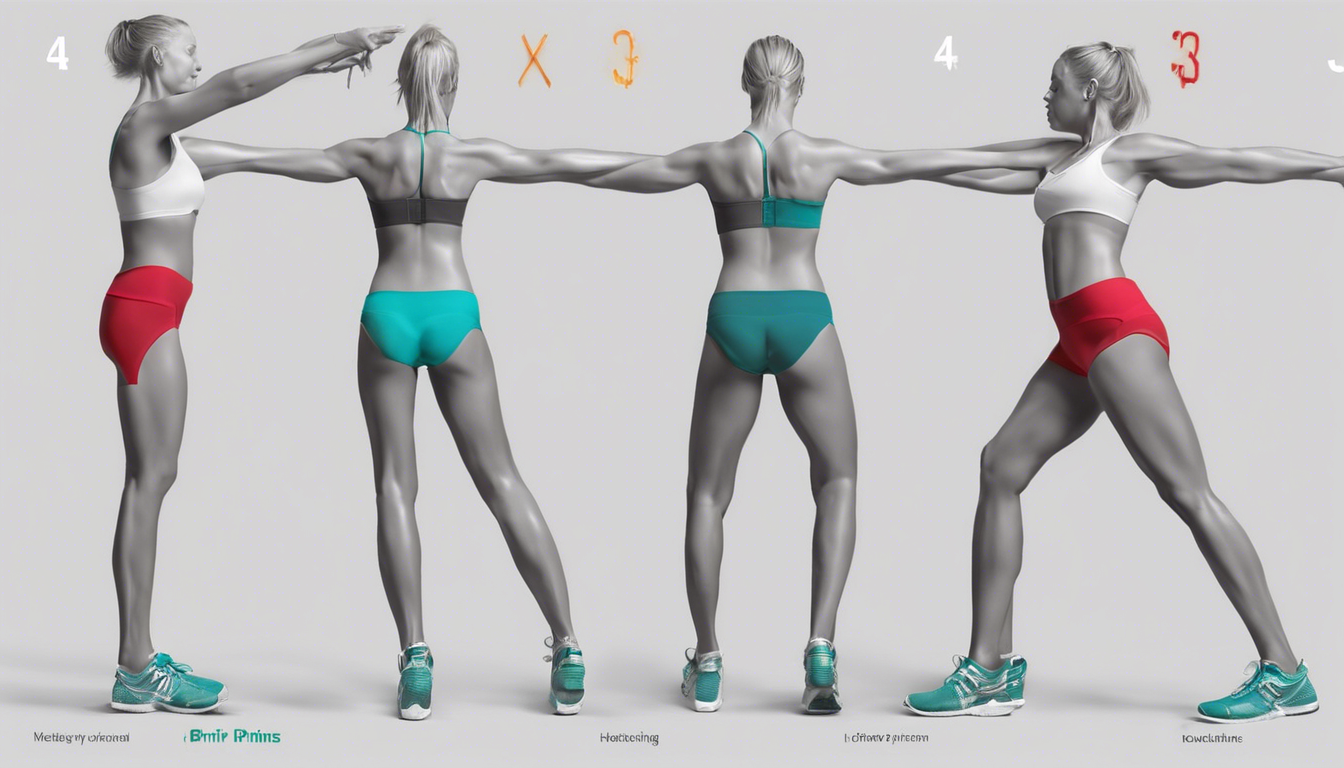Piriformis syndrome can be a painful and limiting condition, affecting anyone from athletes to office workers.
Understanding the symptoms and causes of this syndrome is the first step towards finding relief.
In this article, we’ll explore the anatomy of the piriformis muscle, share effective stretching and strengthening techniques, and discuss lifestyle changes that can help prevent flare-ups.
Whether you’re dealing with discomfort or looking to educate yourself on this condition, our guide will equip you with essential strategies and insights for managing piriformis syndrome effectively.
Your Sciatica Pain-Free Future Starts Here – Click to Learn More!
Key Takeaways
- Piriformis syndrome can cause pain and discomfort in the buttocks and is often linked to muscle tightness or irritation.
- Understanding the anatomy of the piriformis muscle is crucial in identifying the causes of the syndrome.
- Incorporating effective stretching techniques can significantly alleviate symptoms of piriformis syndrome.
- Strengthening hip muscles can support overall hip health and reduce the risk of developing piriformis syndrome.
- Making lifestyle changes, such as improving posture and incorporating regular movement, can help prevent recurrences of piriformis syndrome.
Understanding Piriformis Syndrome: Symptoms and Causes
Piriformis syndrome is a condition that arises when the piriformis muscle, located in the buttocks, becomes tight or goes into spasm, resulting in compression of the sciatic nerve.
Symptoms can vary but often include sharp pain in the gluteal region, tingling, or numbness that may radiate down the leg, mirroring sciatic nerve pain.
This discomfort can be exacerbated by prolonged sitting, climbing stairs, or running.
Understanding the causes of piriformis syndrome is essential for effective management; it can stem from overuse, injury, or anatomical variations where the sciatic nerve runs underneath or through the piriformis muscle itself.
Whether you’re an athlete, a desk worker, or simply someone experiencing unexplained leg pain, recognizing these signs can be the first step toward relief and recovery.
The Anatomy of the Piriformis Muscle
The piriformis muscle, located deep within the buttock region, plays a crucial role in the functionality of the hip and lower body movement.
Shaped like a small pear, this muscle originates from the anterior surface of the sacrum and connects to the greater trochanter of the femur.
In recent years, a condition known as piriformis syndrome has gained attention, which occurs when the piriformis muscle spasms or irritates the nearby sciatic nerve, leading to pain, tingling, and discomfort in the buttock and down the leg.
Understanding the anatomy of the piriformis muscle is essential, not just for recognizing the symptoms of this syndrome, but also for exploring effective treatment options.
For anyone experiencing persistent discomfort in the buttock or leg, being aware of how this small yet significant muscle functions can shed light on their condition and encourage them to seek appropriate care.
‘Your body is your most priceless possession. Take care of it.’ – Jack LaLanne
Effective Stretching Techniques for Relief
If you’re dealing with piriformis syndrome, incorporating effective stretching techniques into your routine can significantly alleviate discomfort and improve mobility.
Start with the classic piriformis stretch: lie on your back and cross the affected leg over the opposite knee, gently pulling the uncrossed leg towards your chest.
This targeted approach helps to relieve tension in the piriformis muscle, which is often a culprit for sciatic pain.
Additionally, try the seated pigeon pose, where you sit on a mat, bend one leg in front of you, and extend the other behind—this not only stretches the piriformis but also opens up the hips.
Remember to breathe deeply and hold each stretch for about 30 seconds, repeating it a few times throughout your day.
Consistency is key, so gradually incorporate these stretches into your daily routine, and over time, you should notice an improvement in both pain relief and flexibility, making your activities more enjoyable.
Your Sciatica Pain-Free Future Starts Here – Click to Learn More!
Strengthening Exercises to Support Hip Health
Strengthening exercises play a crucial role in supporting hip health, particularly for individuals dealing with conditions such as piriformis syndrome.
This often-underestimated muscle, located deep in the gluteal region, can contribute to discomfort when it becomes tight or inflamed, sometimes causing sciatic pain.
Incorporating targeted exercises into your routine can help alleviate this tension and enhance overall hip stability.
For example, exercises like clamshells and bridges engage the gluteal muscles and promote pelvic alignment, while also improving the strength of the piriformis itself.
Additionally, incorporating hip flexor stretches can alleviate tension in the surrounding muscles, creating a balanced approach to hip health.
Remember, consistency is key; aim to integrate these exercises into your weekly regimen to effectively support your hips and potentially mitigate the symptoms of piriformis syndrome.
Lifestyle Changes to Prevent Piriformis Syndrome
Preventing piriformis syndrome—an often overlooked yet troublesome condition affecting the sciatic nerve—can be significantly aided by making mindful lifestyle changes.
Start by incorporating regular stretching and strengthening exercises into your routine, especially focusing on the hips and glutes, as tightness in the piriformis muscle can lead to discomfort and nerve irritation.
Opt for low-impact activities like swimming or cycling that can keep your muscles engaged without overexertion.
Additionally, assess your daily ergonomics—ensure that your workspace is set up to promote good posture and avoid extended periods of sitting, which can exacerbate muscle tightness.
Moreover, consider adding yoga or Pilates to your weekly activities; these practices not only enhance flexibility but also cultivate awareness of your body’s movements, helping to prevent the strain that contributes to piriformis syndrome.
Finally, listen to your body—if you experience tightness or discomfort, don’t ignore it; address it early through appropriate self-care strategies, which can lead to a healthier lifestyle and lower the risk of developing this often-avoidable syndrome.
FAQs
What is piriformis syndrome?
Piriformis syndrome is a condition where the piriformis muscle, located in the buttocks, spasms and causes pain in the buttock area.
This can lead to sciatica-like symptoms, as the muscle can irritate the nearby sciatic nerve.
What are the common symptoms of piriformis syndrome?
Common symptoms include pain in the buttocks, pain that radiates down the back of the thigh or into the leg, difficulty sitting, and discomfort when climbing stairs or running.
What stretches can help relieve piriformis syndrome?
Effective stretches include the seated piriformis stretch, supine piriformis stretch, and pigeon pose.
These stretches can help alleviate tightness in the piriformis muscle and reduce pain.
How can strengthening exercises support hip health to prevent piriformis syndrome?
Strengthening exercises such as hip bridges, clamshells, and squats can enhance muscle stability around the hip joint, which helps to prevent strain on the piriformis muscle and reduces the risk of developing symptoms.
When should I seek professional help for piriformis syndrome?
You should seek professional help if self-care measures fail to provide relief after a few weeks, if pain worsens, or if you experience severe symptoms like numbness or weakness in the legs, as this may indicate a more serious condition.




